Chapter 1: Introduction to Cataracts
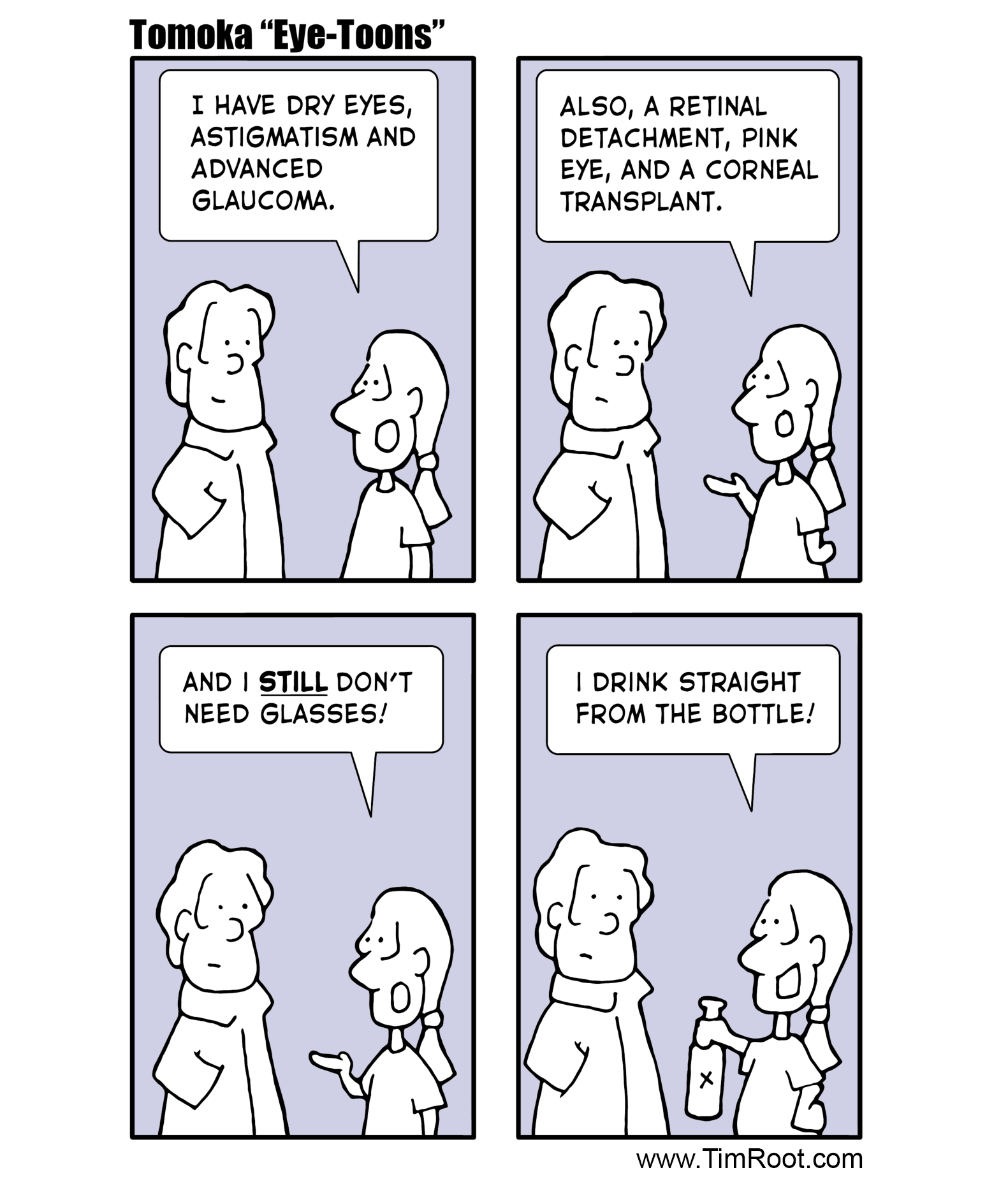
What exactly is a cataract?
When the lens inside your eye becomes cloudy, you have a cataract. This cloudiness develops gradually with age and can create glare or blurry vision. A cataract makes it harder for you to distinguish distant objects or read small print.

There is a lens inside my eye?
Yes. Inside the eye sits a “magnifying glass” called the lens. This lens is suspended behind our iris (the colored part of the eye). When light enters the eye, it passes through the dark pupil and through this lens before reaching the retina at the back of the eye.
If your lens becomes cloudy (a cataract), light has difficulty reaching the retina and your vision is affected.
How does my “lens” become cloudy and turn into a cataract?
The clear lens inside your eye is living tissue, and over your lifetime, cloudy proteins form within this clear tissue. These proteins obstruct light and create a “haziness” to the clear lens. When the haziness is bad enough to be detected, we start calling this a “cataract.”
Most cataracts form as part of the normal aging process. The cloudy proteins accumulate over time as a result of the natural metabolism occurring inside the eye. In fact, everyone over the age of 40 has some mild cataract formation, though it usually takes several decades for the cataract to become visually significant.
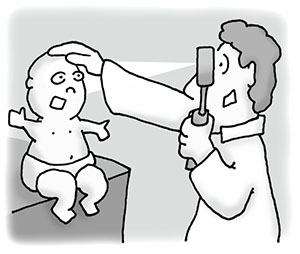 But I’m not that old! Can cataracts form in younger people?
But I’m not that old! Can cataracts form in younger people?
While we normally think of cataracts as an eye problem in the older population, some people develop them much earlier. This early maturation can sometimes have a genetic inheritance pattern. Metabolism changes in the body, such as diabetes or steroid use, can cause early cataracts. Cataracts can develop years after a forgotten eye injury as well. Even infants can be born with congenital cataracts and require surgery to avoid permanent vision loss.
Is there anything I can do to avoid cataracts or make mine go away?
Not really. For most people, cataract formation is a normal aging process inside the eye. There is not much you can do to slow this process down, other than wearing sunglasses to reduce UV exposure. There has been research on oral medications and eye drops that might slow cataract formation, but the results have been unconvincing and the “successes” questionable. The only way to get rid of a cataract is surgical removal.
Can my medication cause my cataracts?
The main medications associated with early cataract formation are steroids. If you take a topical, oral, or inhaled steroid (for asthma, for instance) this can lead to clouding of the lens.
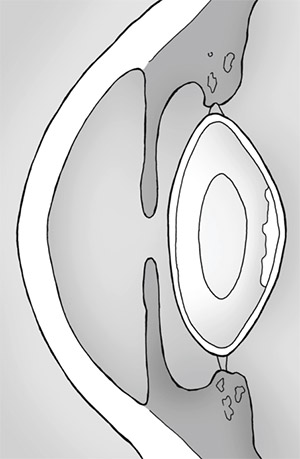 What are the symptoms of my cataract?
What are the symptoms of my cataract?
The first symptom that most people describe to us is one of glare . . . especially at night. For example, you might find nighttime driving challenging because of halos you see around the headlights of oncoming traffic.
Other people don’t have this glare problem because they “just don’t drive that much at night, anyway!” Instead, their cataract causes more problems with visual “crispness” and difficulty seeing fine detail. For example, you might have a hard time reading small print or seeing distant road signs, despite your eyeglasses being up-to-date.
Why do my eyeglass prescriptions keep changing?
Remember, a cataract/lens is like a magnifying glass inside your eye. As the cataract worsens, the strength of that magnifying glass changes and this affects your eye’s overall focus power. This can lead to rapid changes in your eyeglass prescription.
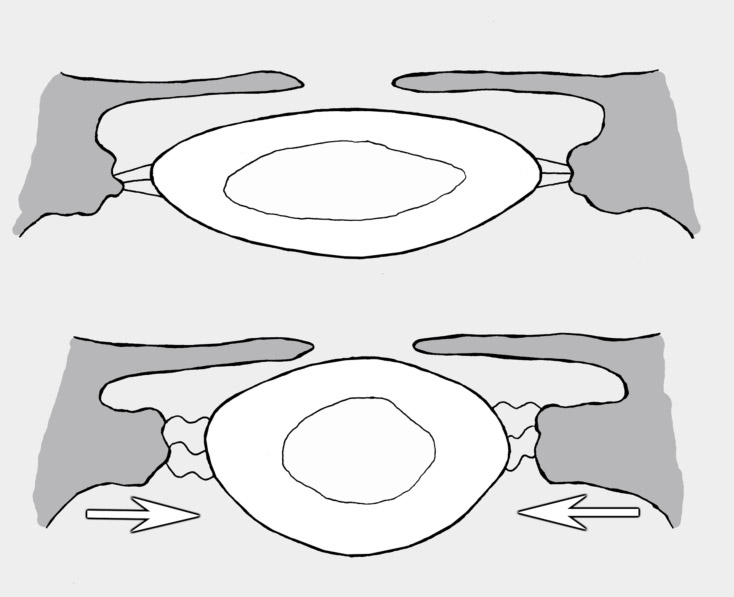
How can I tell if my cataract is getting worse?
For most people, a worsening cataract becomes obvious with deteriorating vision. If you are having more difficulties with night vision, or with reading small words on your television, this could be from a worsening cataract.
Many cataracts form slowly and your visual blur might not be obvious. If your vision loss is gradual, you may not notice how poor your vision has gotten until it is far gone. When we check your vision in the office, we can track how your vision changes over time and give you a better sense of how you’re doing compared to past visits.
Can you judge my cataract by looking at my eyes in the office?
We can see your cataract by examining your eyes under a microscope. A cataract looks cloudy with a yellow tint that glows brightly when illuminated by a beam of light.
While a cataract is easy to detect with a microscope, the SEVERITY of your cataract is harder to judge. We can’t always determine whether a cataract “needs to come out” by our microscopic examination alone. We are always amazed by “wimpy looking” cataracts that seem to cause major vision problems. And yet, some patients have cataracts that look “horrendous” under the microscope but still have good vision.
When it comes down to it, it really isn’t just what the DOCTOR sees when looking at your eyes that matters. What matters is how well YOU see in your daily activities. Your opinion is important in helping make this decision.
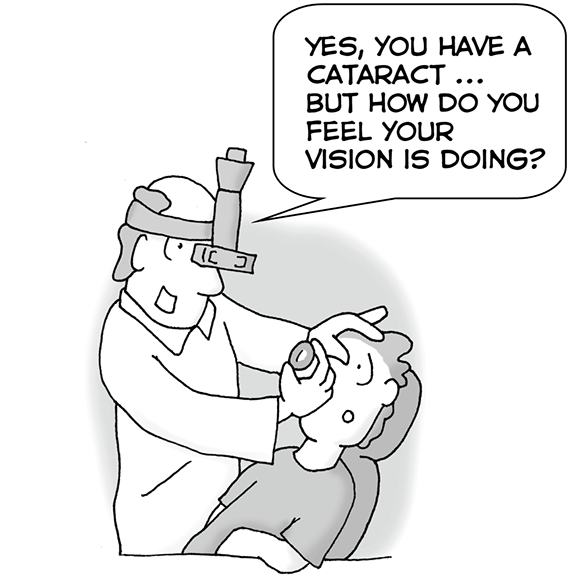
How can you tell if a cataract is causing glare?
We can estimate glare problems by checking your vision in a dark room using an eyechart. We then RECHECK your vision using glare-inducing lights. If your vision worsens under these conditions, then we know glare must be causing problems out in the “wild” as well.
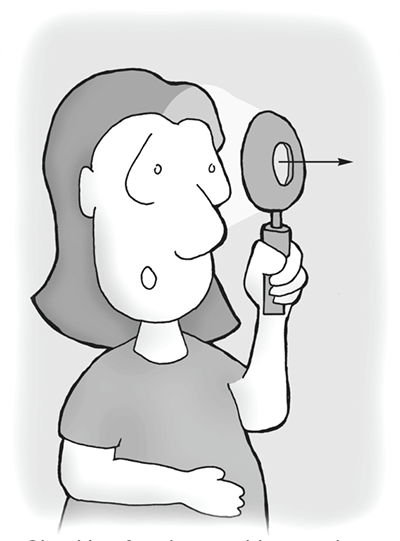
How do I know if I need cataract surgery?
This really is the big question, right? Should your cataract come out? Will surgery be worth it? Do you really need to subject yourself to an operation? Just because we CAN remove a cataract, doesn’t necessarily mean we MUST remove it immediately.
The only downside to this hands-off philosophy is that the longer we wait for a cataract to develop, the “harder” the cataract becomes. The cataract lens can become physically dense and hard like a rock! A dense, hard cataract may increase some risk factors during and after surgery.
The key for YOU is to deal with your cataract once it “ripens,” but before it gets “too dense.” For most people, than means waiting until your vision starts to worsen such that your lifestyle becomes affected (you don’t feel safe driving at night, for example). Just like everything else in life, it’s about balancing the benefits with the risks . . . and deciding when the time is “right” for surgery is not always obvious.
Are there times when you recommend cataract surgery despite your patient having no major vision complaints?
On rare occasions, we’ll recommend cataract surgery even if you don’t have any significant vision problems. This is usually because:
- Your cataract is looking extremely dense and we’re worried about complications with delayed surgery.
- Your pupils don’t dilate well and your cataract is advancing quickly.
- Your cataract is causing other problems, such as glaucoma.
- You need your cataract removed before you can have another surgery (such as retina surgery).
These situations don’t arise very often, and we don’t push for surgery unless we really believe it necessary. Remember, cataract surgery is an elective surgery … and when it comes to elective surgeries, the goal is to minimize risk.
I trust you … you’re the doctor. You just tell me when I should have my cataract surgery!
We’re sure you have many complex problems in your life and other issues take precedence over your vision. It would be nice to let your doctor tell you when “the time is right” for cataract surgery. Unfortunately, we just can’t make this decision for you.
Once upon a time, your doctor told you what to do, and you followed instructions. However, healthcare has changed. The biggest advocate for your own health is now YOU, and you need to have a reasonable understanding of your treatment options if you want to have reasonable outcomes.
Our job is to educate and give you the tools to help you make an intelligent decision about potential cataract surgery. Then, our responsibility is to do a good job and support you through this experience.
We promise to do our best to gauge the severity of your cataract and educate you about what kind of visual improvements to expect. We’ll even tell you whether “we feel” the benefits of surgery outweigh the risks in your particular case.
But remember . . . despite all safety precautions and the best surgical intentions, unexpected things can happen.
Are you any good at this?
We think we’re pretty good at cataract surgery . . . like most ophthalmologists, cataract surgery is our primary surgery and each of our doctors currently performs 10-20 cataract surgeries in a day. Tomoka Eye has been performing cataract surgery in the Daytona Beach area for more than 40 years. We all have good eyes, steady hands, and are risk-averse. However, we make no claims at being superhuman.
Cataract surgery is the “most common” operation for our ophthalmologists. We do this surgery thousands and thousands of times. Just like any other task . . . be it cooking, golf, or juggling chainsaws . . . you can’t help but get good and develop proficiency when you do something this often.
Are you experienced enough to be doing cataract surgery on me?
Picking your surgeon can be a nerve-wracking experience, especially when your eye doctor looks younger than your children.
We like to think of ophthalmologists falling along an “experience spectrum.” On one end, you have younger doctors who trained using the most modern equipment and who have (at least theoretically) good hands, eyes and reflexes for this kind of delicate procedure. On the other end of the spectrum, you have older eye doctors who trained via older methods, but kept themselves up-to-date with modern techniques and have the wisdom of experience.
Quite frankly, we feel that ALL the eye doctors in the Daytona Beach area are very good and all of them will do a great job for you.
The biggest key for YOU is to find an eye doctor that you are comfortable with, who you feel confident in, and who you feel will do right by you in the unlikely event that your surgical path is a little rocky.
How is cataract surgery performed?
Cataract surgery is a procedure that involves removing the cloudy cataract from your eye and replacing it with a clear lens implant. This procedure takes only 15 minutes. You are awake throughout the procedure, but we do place an IV in your arm so that we can give you pain relaxing medicines (if you need any). You can’t see the instruments during the surgery, just a bright light from the microscope.
To get your cataract out, we need to physically remove it. The OLD way of performing cataract surgery involved making a very LARGE incision and removing the cataract in one big giant piece. We would then sew numerous stitches in your eye and the visual recovery would take months and involve tedious suture removal. Today, we perform this surgery through a TINY microincision that is so small it seals on its own with little eye irritation and usually no stitches at all!
Once we’ve created the microincision into the eye, we remove the cataract tissue by breaking it up into small pieces and vacuuming these pieces out with a delicate ultrasonic device.
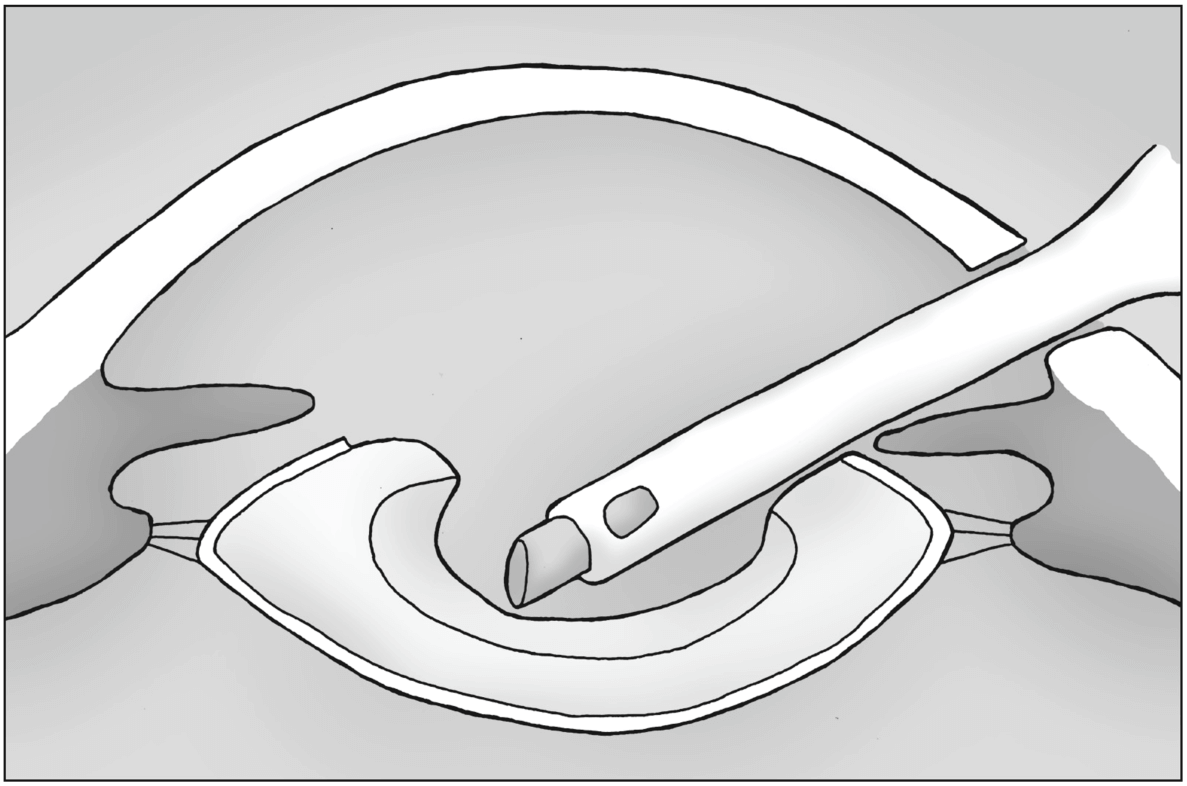
We then inject a new “implant” back into the eye. This implanted lens folds, allowing us to inject it through the microincision. Once inside the eye, the implant unfolds like a blossoming flower and replaces your cataract with a nice clear lens.
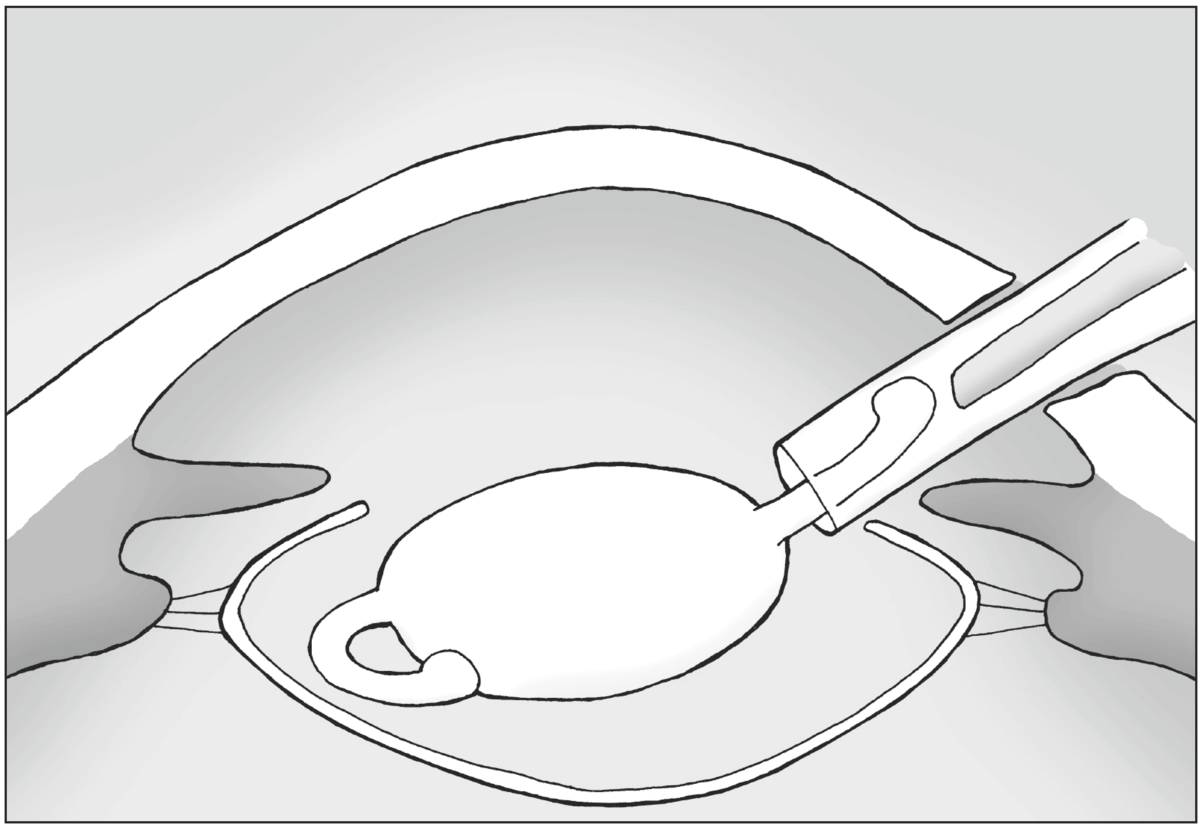
After your implant is in secure position, we sit you up. We then give you coffee/tea and a muffin to fill your empty stomach while we review your post-operative instructions. We then send you home the same morning. You’ll use eye drops at home and wear a clear shield taped over your eye at bedtime and while napping.
Do you use needles or stitches in my eye?
Normally, no. We use an IV in your arm to give you pain medications and an eye drop anesthesia to numb the eye, so that needles aren’t needed near your eye!
The microincision made is so small (2.7 millimeters) that you don’t feel it, and it seals up on its own after surgery without the need for stitches.
What kind of vision should I expect after cataract surgery?
The purpose of cataract surgery is to make your vision clearer, crisper, and to reduce glare. This will make it easier to perform fine tasks like threading a needle, driving a car at night, and seeing small print on the television screen.
Sometimes, you don’t need glasses at all (at least for distance vision), but that’s more of a secondary benefit – and most people still benefit from wearing a mild eyeglass prescription after surgery.
Does my insurance pay for this?
Just about every private insurance, including Medicare, pays for cataract surgery since this is a medical diagnosis. Your insurance covers:
- Cataract Surgeon’s Fee (that’s us!)
- Facility Fee (our surgery center)
- Standard Implant
- Follow-up Care
Your insurance does not pay for deductibles, co-pays, laser surgery, or for the “premium” implants. Our surgery coordinator will answer your questions about out-of-pocket expenses and specifics.
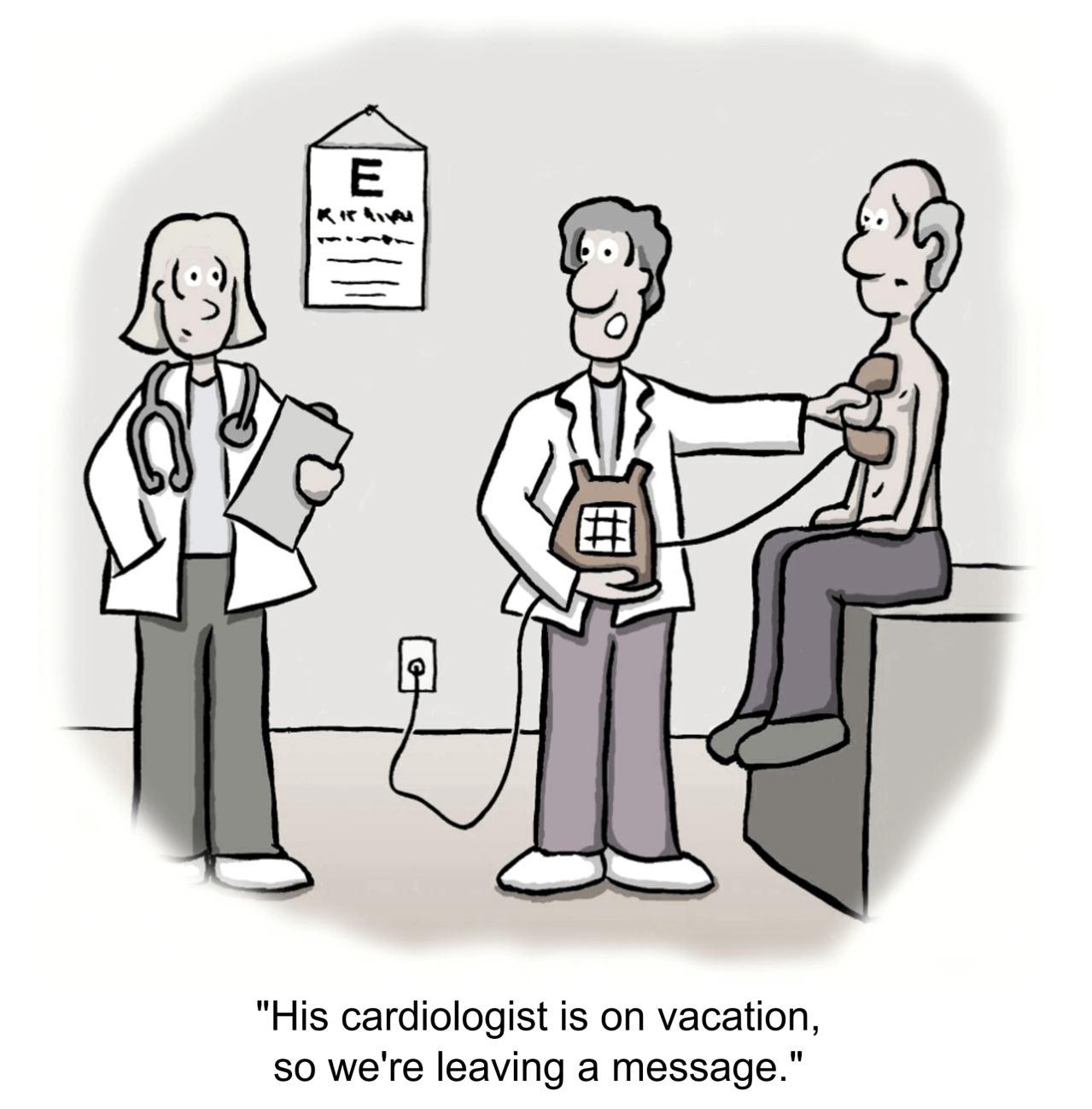
Thanks for your comment about how you should et cataract surgery if the lens gets really hard. I didn’t know that another sign of when you should see a medical professional is when your vision worsens. My mother has a cataract, and she is considering looking into medical professionals that can help with the surgical process.
Dear sir! just today i received two of your books that i ordered on line 22 days ago. it was an exciting moment. Your service to the ” poor students ” and the subject of ophthalmology actually merits a separate article and a letter of gratitude. That i will write too, inshaallah!
i could not find the cataract video, probably it isn’t out yet. I want to ask when will it be ” released ” ?